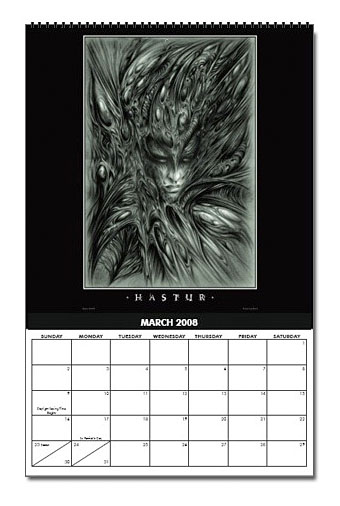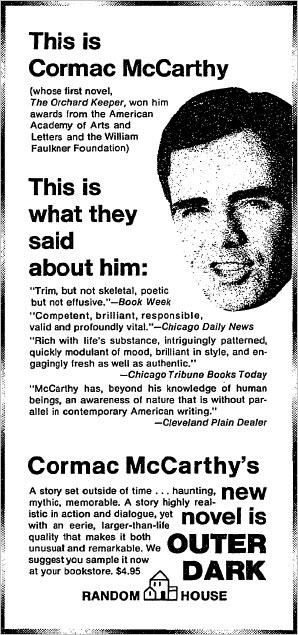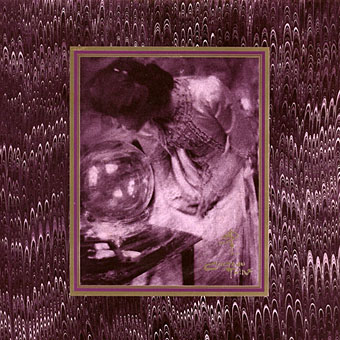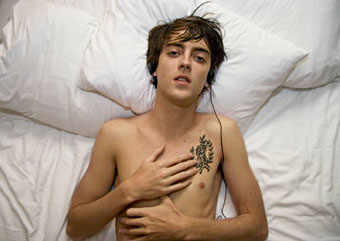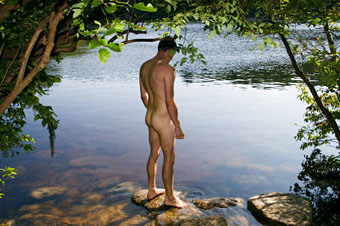Mid-September is when new calendars are unveiled so here’s my addition to the calendrical onslaught. This year’s edition is an improved version (with tinted page art and a unique cover design) of the Lovecraft-themed calendar I produced last year, and of the three 2007 designs was easily the most popular. The pictures are those from The Great Old Ones sequence in The Haunter of the Dark. You can see larger versions of the page art here and the CafePress shop is here.
Outer Dark
A very young-looking Cormac McCarthy (he was 35) in a New York Times book ad from 1968. There are more ads from the paper’s recent past here.
Previously on { feuilleton }
• Cormac McCarthy book covers
Strange cargo: things found in books

The Secret Oral Teachings in Tibetan Buddhist Sects by Alexandra David-Neel & Lama Yongden, City Lights Books (1972).
One of the additional pleasures of buying old books besides finding something out-of-print (or, it has to be said, something cheap) occurs when those books still possess traces of their previous owners. A recent posting on The Other Andrew’s page concerned book inscriptions, something any book collector will be used to seeing. Less common are the objects which slip from the pages when you’ve returned home. There are several categories of these.
1: Bookmarks
I have a substantial collection of bookmarks proper, from embossed strips of leather to the more mundane pieces of card of the type that bookshops frequently give away. But I also make a habit of using odd inserts to mark a place as did the previous owners of these volumes. The City Lights book (above) came with a very fragile leaf inside it which may well be as old as the book. Another City Lights book I own, the Artaud Anthology from 1965, included a newspaper article about Artaud. Newspaper clipping inserts are discussed below.
Gertrude Käsebier’s crystal gazer
The Crystal Gazer (or The Magic Crystal, 1904).
The photographs of Gertrude Käsebier (1852–1934) seem to be popular with art directors; the picture above was used on the sleeve of the Spangle Maker EP by the Cocteau Twins in 1984 and her Silhouette of a Woman / A Maiden at Prayer (1899) appeared on the cover of the Nonesuch recording of Henryk Górecki’s Symphony no. 3 in 1991.
The Spangle Maker by The Cocteau Twins (design by 23 Envelope).
• Gertrude Käsebier at the Art of the Photogravure
Previously on { feuilleton }
• Karl Blossfeldt
• The Dawn of the Autochrome
• Fred Holland Day
• The Door in the Wall
• Edward Steichen
• Mark Twain and Nikola Tesla
Brandon Herman
Ian with headphone.
Photographs by Brandon Herman at the David Gallery, Culver City, CA. The exhibition runs from September 8th–October 13th, 2007.
In BrandonHermanLand the subjects are absorbed in their own intensely private worlds, whether it be cleaning the pool, contemplating a baseball in bed, or skateboarding nude at night. Herman’s talent as a photographer lies in managing to get his subjects to bare their souls as well as their bodies to the viewer.
Via Towleroad.
Untitled (Patrick swimming hole) (2006).

